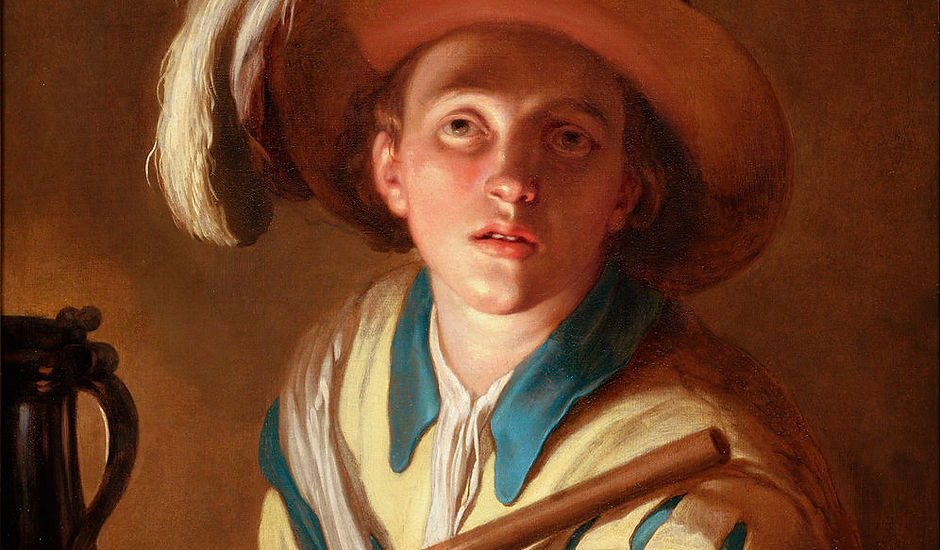
Call for Contributions: Abraham Bloemaert
(peer-reviewed edited volume, Brepols)
(deadline abstracts: 15 February 2019)
edited by Léonie Marquaille (University of Lausanne)
published in the context of the project A Golden Age? Rethinking the 17th-century Dutch painting (University of Geneva)
Editorial Board
Susanne Bartels, University of Geneva
Jan Blanc, University of Geneva
Marije Osnabrugge, University of Geneva
The second edited volume in the new series Gouden eeuw: New Perspectives on Dutch seventeenth-century Art, published by Brepols, will be devoted to the Utrecht painter Abraham Bloemaert. This artist has received considerable scholarly attention following the publication of the catalogue raisonné of his paintings by Marcel Roethlisberger (1993) and, more recently, of his drawings by Jaap Bolten (2007), in particular within the context of the major exhibition The Bloemaert effect (2012, Utrecht & Schwerin). To complement these predominantly monographic studies, this edited volume aims at broadening the scope and positioning Abraham Bloemaert and his workshop within the artistic developments taking place in Utrecht, the United Provinces and the rest of Europe, during the first half of the seventeenth century.
In order to offer new perspectives and stimulate further research, this volume will carefully examine the role of his atelier and the various artistic practices – painting, engraving, and drawing – in which its members engaged under Bloemaert’s supervision. The oeuvre and career of Abraham Bloemaert can serve as a point of departure for a variety of research questions. A study of his career strategies will allow us to better comprehend how the artist was able to develop an atelier bustling with pupils and assistants. This atelier allowed him to produce a considerable body of work. Likewise, the varieties of specialisations in practice within Bloemaert’s studio could explain why he has traditionally been associated with the figure of the universal artist. The importance given to history painting by artists in Bloemaert’s circle should thus be considered in light of the artistic and social context in Utrecht. It is also a key for a better understanding of the specificities of the Utrecht artistic milieu as compared to the production of other artistic centres of the United Provinces.
While the construction of Bloemaert’s network was largely influenced by the local religious context, the mobility of his pupils – during their apprenticeship but also after their departure from the workshop – enabled him to meet the expectations of an audience interested in the depictions of daily life. As such, we want to address the degree to which new iconographical themes were developed by Bloemaert and his workshop. Thus, one of the questions we would like to see investigated in this issue is the role of the artist’s workshop in the dissemination of Flemish and Italian models, notably through the works of the Utrecht Caravaggists. Focusing on the artistic practices and dynamics of Bloemaert’s workshop will also allow us to better appreciate how different art forms were developed and interacted with each other within that particular space.
In recent studies, the main focus was on his paintings, in that context, Bloemaert’s drawings were used as a means to reconstitute the picture’s artistic process of elaboration; whereas engravings were generally discussed in relation to the diffusion of Bloemaert’s work. A closer examination of his drawings and engravings could offer new insights into the origin and development, as well as the diffusion of artistic inventions. It is necessary to study these practices within the context of Bloemaert’s workshop in general. For example, did drawings only play a role into the apprenticeship or did they also function as visual references that could be employed by pupils and the master himself in painted compositions? Were Abraham’s sons (Adriaen, Cornelis II, Hendrick and Frederick) the only ones in charge of the diffusion of their father’s oeuvre? How did Cornelis II’s arrival in the workshop affect the manner in which engravings functioned with regard to its artistic practice? And what happened to the workshop’s members and inventory (drawings, copper plates), after the master’s death?
Finally, the contemporary reception of Abraham Bloemaert’s works in the United Provinces will be a special topic of interest for this issue. Should Bloemaert be considered as the ‘father of the Utrecht school’ (Van Eck, 2012) and the founder of a dynasty of artists? A survey of the posterity of Bloemaert’s work beyond the seventeenth century is also crucial to the debate as it requires to look at the dissemination of his workshop’s models, as well as, the way Bloemaert and its oeuvre were presented in the first catalogues of his work.
Potential topics include, but are not limited to:
-
The economic structure of Abraham Bloemaert’s workshop
-
The diversity of members of the workshop, their different roles and career strategies
-
The role of Bloemaert’s sons in the workshop practice
-
The importance of the religious denomination in the choice and execution of specific subjects
-
The connection between painting, drawing and engraving (whether as didactic support or artistic medium in their own right)
-
The mobility of artists and artistic exchange
-
The social and intellectual context in Utrecht
-
The diffusion and reception of Bloemaert’s works
-
The critical fortune of Abraham Bloemaert
Submission guidelines
Proposals may be submitted in the form of a synopsis (max. 400 words) detailing the article’s aims, outline and its contribution to the scientific debate (theoretical insight and/or documentary evidence). Upon acceptance, articles will be submitted in English or French, and will not exceed 8000 words (incl. footnotes). Up to 10 illustrations can be included per article. Selected articles will then undergo a process of peer review in order to confirm they comply with scientific and quality standards of the series. Please send your proposal to Léonie Marquaille (leonie.marquaille@unil.ch) before 15 February 2019. Selected contributors will be required to submit their article by 1 June 2019.
